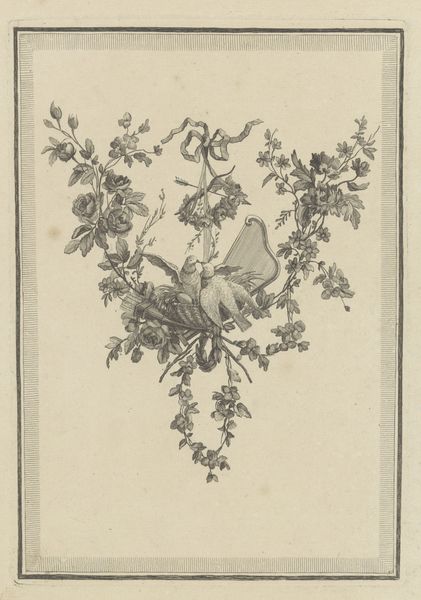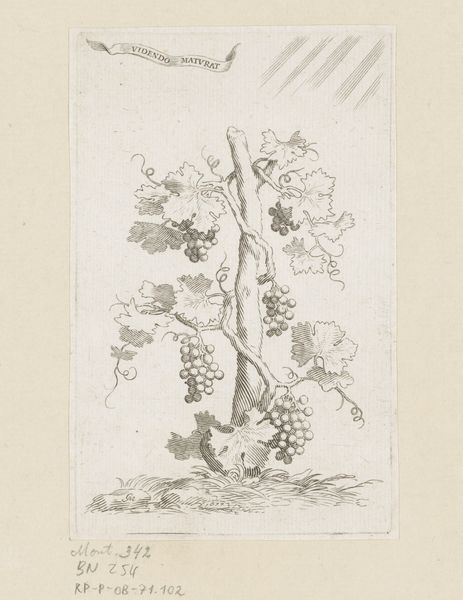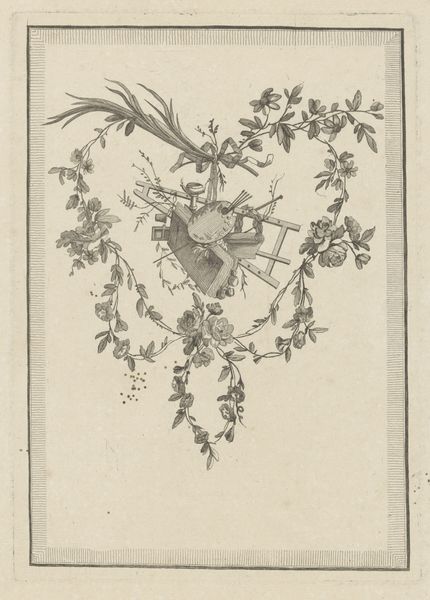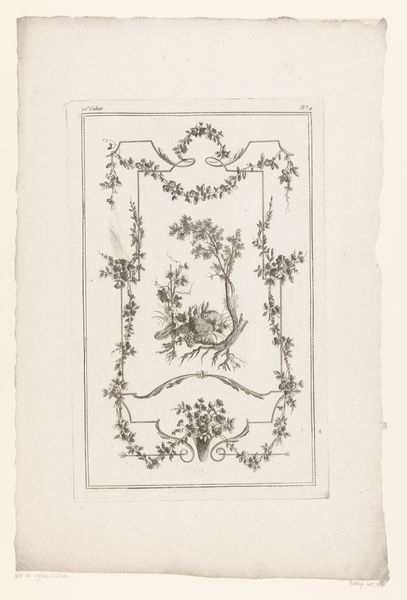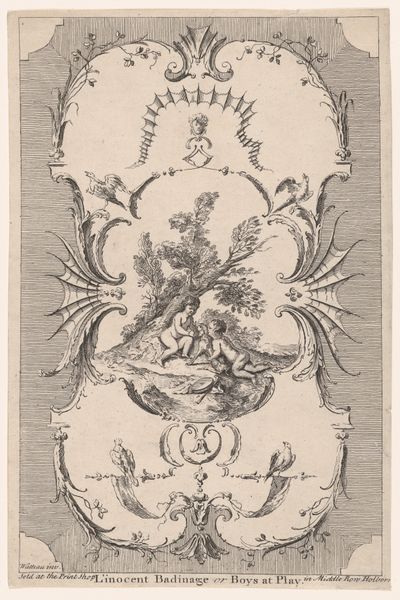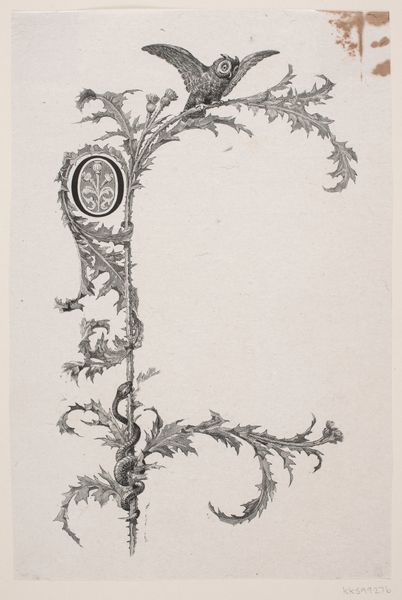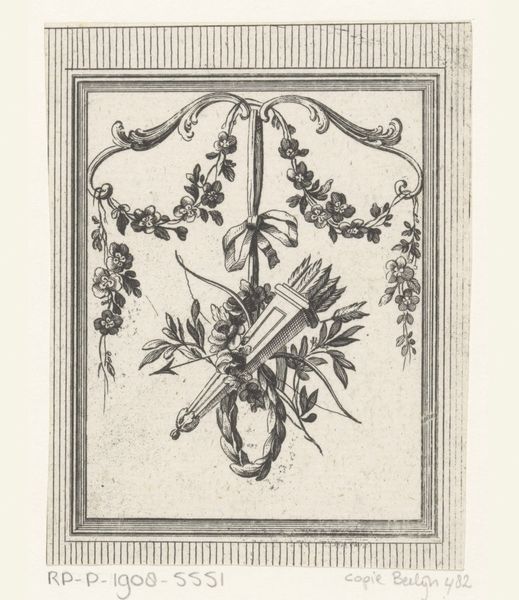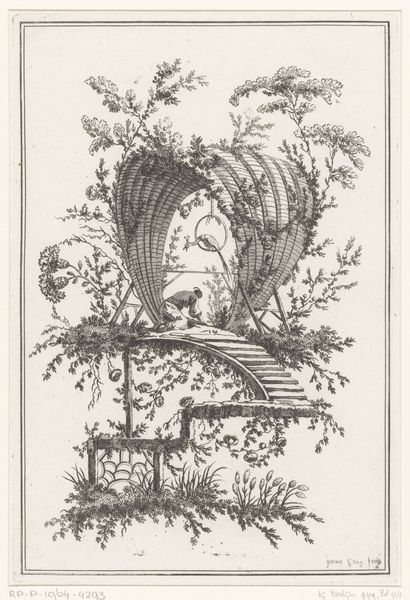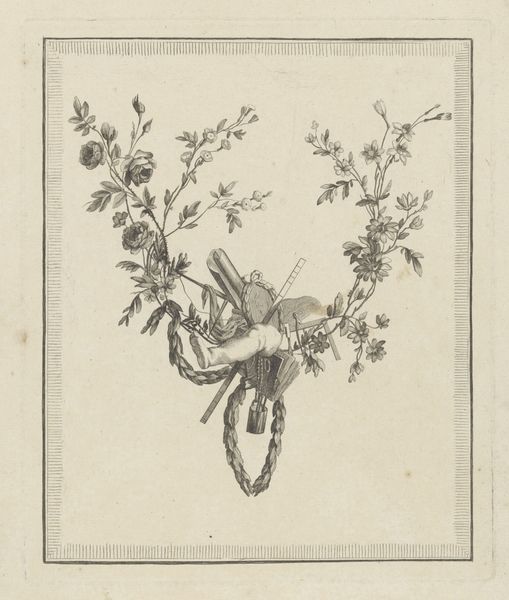
Slutningsvignet til Frederik Paludan-Müller, "Lucifers fald" 1870 - 1881
0:00
0:00
drawing, ink, pen
#
drawing
#
light pencil work
#
narrative-art
#
pen sketch
#
pencil sketch
#
landscape
#
figuration
#
personal sketchbook
#
ink
#
ink drawing experimentation
#
pen-ink sketch
#
ink colored
#
symbolism
#
sketchbook drawing
#
pen
#
pencil work
#
sketchbook art
Dimensions: 71 mm (height) x 57 mm (width) (bladmaal)
Curator: The final vignette for Frederik Paludan-Müller's "Lucifers fald," created sometime between 1870 and 1881, is rendered with delicate pen and ink on paper. Editor: My immediate impression is one of restraint. The small scale and meticulous lines give it a quality of understated menace. It’s like a contained explosion of symbolism. Curator: Indeed. It’s deceptively simple. At first glance, we see a tree, its trunk encircled by a serpent. But consider the cultural context: the immediate association with the biblical narrative of temptation, disobedience, and, crucially, loss of innocence, takes on new meaning in the light of patriarchal readings that equate women with evil. Editor: Absolutely, it’s about materialization, too. Think about the making: pen and ink, easily accessible materials, perhaps a comment on the availability and interpretation of religious and societal constraints and ideals that permeated culture and were broadly disseminated? It would require a certain labor, too, both intellectual and physical to reduce the narrative in such clear visual vocabulary. Curator: The landscape genre takes a backseat here to the symbolic figuration. I feel there is also a political dimension here – perhaps a visual metaphor commenting on systemic societal failures masked in idealism, considering Lucifer's fall symbolizes an overthrow of hierarchy, however flawed. The artist invites viewers to acknowledge their own position within larger narratives of power, rebellion, and perhaps self-destruction. Editor: It also strikes me that using readily accessible materials makes the scene feel more… relatable. It could be a call for more open material interpretation that empowers even the smallest voice and recognizes everyone is part of the bigger symbolic stories. It shows art needn’t be confined to precious media or rarefied environments to speak powerfully. Curator: I concur, the convergence of accessibility and complexity allows for a potent artistic statement about collective culpability. I am leaving this drawing thinking about how societal narratives about blame remain, still as poignant and loaded today. Editor: For me, seeing this seemingly simple image I am reminded of the strength of humble materials. It inspires me to focus on production as activism in art, to promote art-making not just art object ownership as tools for societal shifts.
Comments
No comments
Be the first to comment and join the conversation on the ultimate creative platform.
